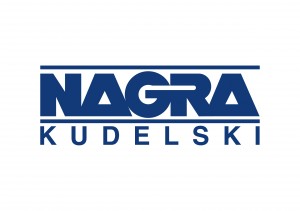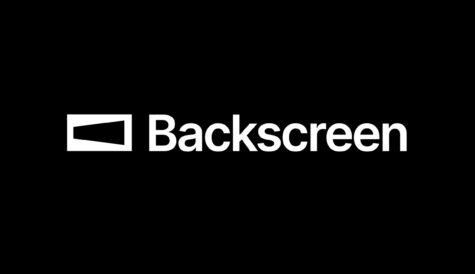Q&A: Simon Trudelle, Nagra
 Access network providers are beginning to market CDN services to content providers as well as setting them up to deliver their own content offerings. Simon Trudelle, senior product marketing manager, Nagra, discusses the key on-net CDN business models and the question of how long it will be until most video goes OTT on CDN.
Access network providers are beginning to market CDN services to content providers as well as setting them up to deliver their own content offerings. Simon Trudelle, senior product marketing manager, Nagra, discusses the key on-net CDN business models and the question of how long it will be until most video goes OTT on CDN.
 What is the best way for cable and telco operators to get into this market? How can they make revenue from this market – indeed is anyone doing so?
What is the best way for cable and telco operators to get into this market? How can they make revenue from this market – indeed is anyone doing so?
With more and more subscribers expecting TV everywhere and TV anytime access on multiple screens, most of which are native IP, service providers have had no choice but to at least partly rely on CDN-based video delivery. In doing so, they can deploy their own CDN infrastructure on their network, or deploy a form of “CDN in the cloud” (usually based on regional peering agreements with other ISPs), or rely on the cloud-based infrastructure of commercial CDN vendors.
The benefits of adding OTT TV delivery to the mix are significant in terms of general user features (mainly TV anytime, anywhere on any device) and opportunities for providing new interactive services to consumers. These benefits alone have significant churn avoidance potential and therefore present a convincing argument for service providers to at least complement their existing delivery infrastructure with OTT technology.
The concrete opportunities for a service provider slightly vary depending on the starting point of the operator:
– Broadcast service providers have a specific opportunity in that a relatively low investment threshold will allow them to significantly enrich their existing DTH or DTT bouquets which are inherently efficient for high viewership channels, with the implied flexibility and multi-device reach of OTT.
– Telcos can gradually take the opportunity to unify their existing IPTV offer across multiple screens by consolidating onto a single OTT based delivery paradigm, even on their own network. In that sense, CDN distribution with adaptive bitrate streaming is in fact becoming “the better IPTV” in the context of which services like catch-up become straightforward side effects of the delivery paradigm.
– Cable operators have the additional flexibility to have both DOCSIS and DVB delivery mechanisms on the same conduit, allowing them to gradually shift more of the TV distribution on the DOCSIS part to eventually end up with an all-IP distribution. Since the multicast gain is very limited or even non-existing for a significant portion of the channel bouquet in a cable topology (cf. the next-gen cable paper we recently did with Farncombe), we also think this IP delivery over cable will rather benefit from CDN technology than from traditional multicast IPTV.
For content suppliers, congested broadband networks may, however, just turn viewers off and negatively impact their revenues. It then becomes key for content suppliers to set agreements with cable and telco service providers to ensure sufficient quality of service and experience for OTT content.
While the CDN business has been an inherently cost-driven, commoditized service until now, the sharp increase in demand from pay TV subscribers for on-demand delivery of premium TV content defines higher expectations that, when fulfilled, can be monetised by service providers.
This presents an interesting opportunity for cable and telco operators who will de facto be deploying on-net CDN technology for their own TV services and who can now indeed offer the underlying infrastructure as such to other players in the value chain and they can do this in different flavours, ranging from just the CDN service up to an entire ready-to-roll white labeled cloud-based TV service.
What added value services can on-network CDN providers bring to content suppliers?
As the audience for on-demand premium TV increases, Service Providers are asked by content providers to provide superior content protection and seamless content delivery across an increasingly large number of OTT devices. In this complex environment, with multiple DRMs and adaptive bitrate streaming technologies to use, managing content delivery and ensuring a superior Quality of Experience is a technical and operational challenge that commands a price. Using a multiscreen delivery software solution like Nagra MediaLive or a ready-to-roll white labeled cloud delivery service as provided by NAGRA with its partner Abertis Telecom can help satisfy the most demanding needs of content suppliers and ensure better margins for service providers.
What is Nagra’s forecast for a tipping point at which CDNs will become cheap enough to migrate broadcast content into an OTT environment?
Nagra has conducted research showing that the continuous decrease in CDN and general IP bandwidth costs (due to continuous technology enhancements in silicon, storage and overall transmission capacity) enables an economically viable OTT delivery of certain channels of a bouquet along with content that is inherently unicast like catch-up and on-demand.
However, as high speed broadband networks are not expected to reach every household in the foreseeable future, even in developed countries, service providers looking to reach the largest number of consumers will still be better off using hybrid delivery networks.
A clever mix of OTT and broadcast solutions will be the prevailing recipe for service providers to improve the overall viewer experience while reducing their content delivery costs.
Nagra MediaLive makes that vision a reality for service providers with its hybrid multiscreen solutions that leverage the benefits of both broadcast and broadband OTT TV delivery across multiple devices.



